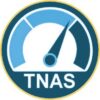In every company, training is needed. Your employees would need training regarding new facilities, new jobs, new technology and new trends. You can also have training programs on how to improve competencies and skills of your manpower. However, you cannot just send someone to attend training courses without knowing what your employees need. The first step in the training process is you have to diagnose and assess your target participants. How would you do this? You need to conduct a thorough training needs assessment or TNA.
Before you conduct a TNA, you have to equip yourself with the different methods of needs assessment. Be familiar with the methods for you to know what suits your organisation ’s needs.
User analysis – This method is identifying who will be your target participants and trainers. You have to answer the following questions below to guide you with this method:
-
- Who will benefit from the training?
- Who will receive it?
- Who will conduct it?
- What is the learning style and capacity of the participants – individually and as a group?
- What type of teaching methods will make the participants respond to best?
- What is the extent of knowledge and expertise on the subject matter of your trainers? For instance, you intend to conduct business correspondences course to seafarers. Your trainer is very equipped with the general knowledge on business correspondences but he might lack the knowledge in the company’s industry like the terms used on board. Your trainer might need first an overview on the industry to be acquainted with the terminologies for him to use it as examples during the training proper.
Task analysis – This method considers the requirements that are needed to perform the work or job well. In this method you have to specify clearly the tasks and the level of the skills needed for the said tasks.
Content analysis – This method of assessment is wherein the source of materials will be analysed if it is deemed fit for the training proper itself. Here are some guide questions:
-
- Do you have updated documents to support the program?
- Are the materials at hand relevant to the program?
- Will the materials help accomplish the aims and objectives of the program?
- Will the materials help to have the desired results from the participants?
Cost-Benefit analysis – This is another type of TNA wherein it equates Return on Investment or ROI. There is an equivalent cost for every training session – hours spent by the employees during the training and all expenses incurred to conduct the training. In this method, you have to assess how long it will take to get results from the training. For instance, when will the participants use what they have learned from the program in their respective job roles and tasks? Will the participants can immediately apply what they have learned or it will take time to see results?
Training needs assessment must answer and cover the following areas:
- What are the reasons for the training?
- Are there gaps to be filled? Are there desired behaviours, competencies and skills to close the gap?
- It should analyse the current behaviours, knowledge, skills, and competencies of the intended participants.
- Conduct a check point if training can fix the organisation’s issues and gaps.
- Choose and decide for the appropriate delivery methods. Include the training plan with the corresponding costs.
Benefits of the training needs assessment:
-
- The participants will receive a tailored fit program for them to answer their needs.
- The program will be able to answer organisation al needs.
- Trainers will be aware of the training needs of the group and the organisation.
- The management can set their expectations from the training program.
- It answers issues that are non-training that affects performance of the employees.
- It serves as a basis for post-training evaluation.
Here’s a sample of a how to conduct a training needs assessment:
- You would need to gather in one conference hall all the employees that have the same job and function. You would need white board, markers, extra paper and pens. It would be advantageous for you if someone from your HR team will help you document the session. It will serve as a future reference as well.
- Start the session by asking the participants what they consider as their top ten training needs. Make sure that you will tell them to list their specific training needs. Most of the time, employees will just write team building or any communication program. Examples of specific training needs are how to deal solve conflict with colleagues, how to receive feedback from supervisors, how to write email correspondences or how to answer phone inquiries professionally.
- Ask the audience their individual answers to share it with the entire class. As a person shares his training needs, you as the facilitator will capture the details through writing on the board. It is your task to screen their answers to avoid duplication.
- Once everyone has shared his answers and you have listed their training needs, it is now time to know which program should the group prioritise. You can do this in a weighted voting process. Ask each participant to give points in each listed program.
- You should now list the order of importance of the training needs based from the number of points received of the program. Make sure that someone is taking note of all the comments, concerns, issues of each person while discussing the programs.
- After your initial session with the employees, set another session to brainstorm for the goals of the planned training programs. You should also discuss the expected results of the course from the employees at the same time their needs are also met.
- You have to remember that not all the needs of the employees are the priorities of the entire group. You have to consider building training opportunities incorporated to the employee’s performance development plan.



